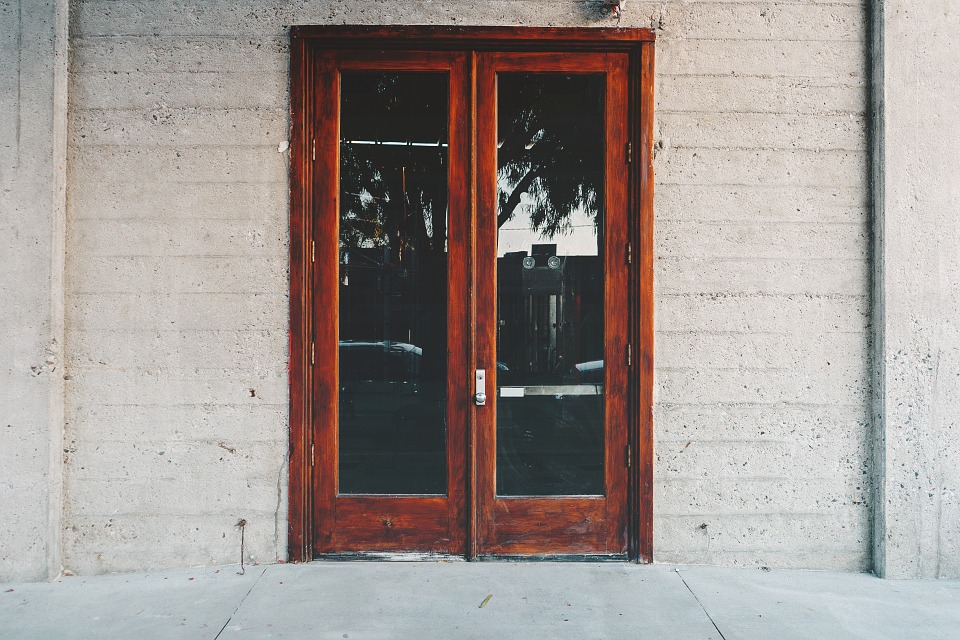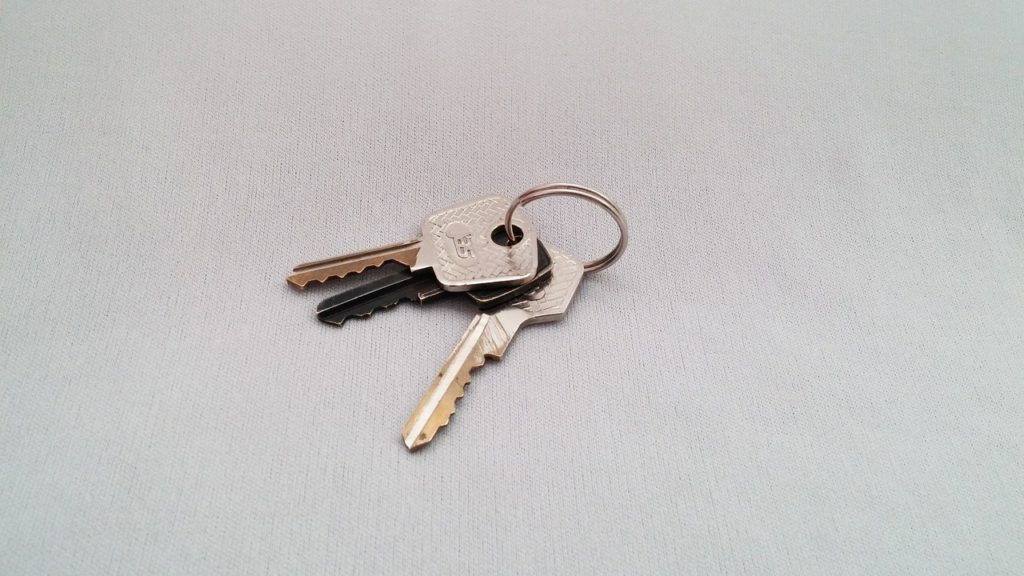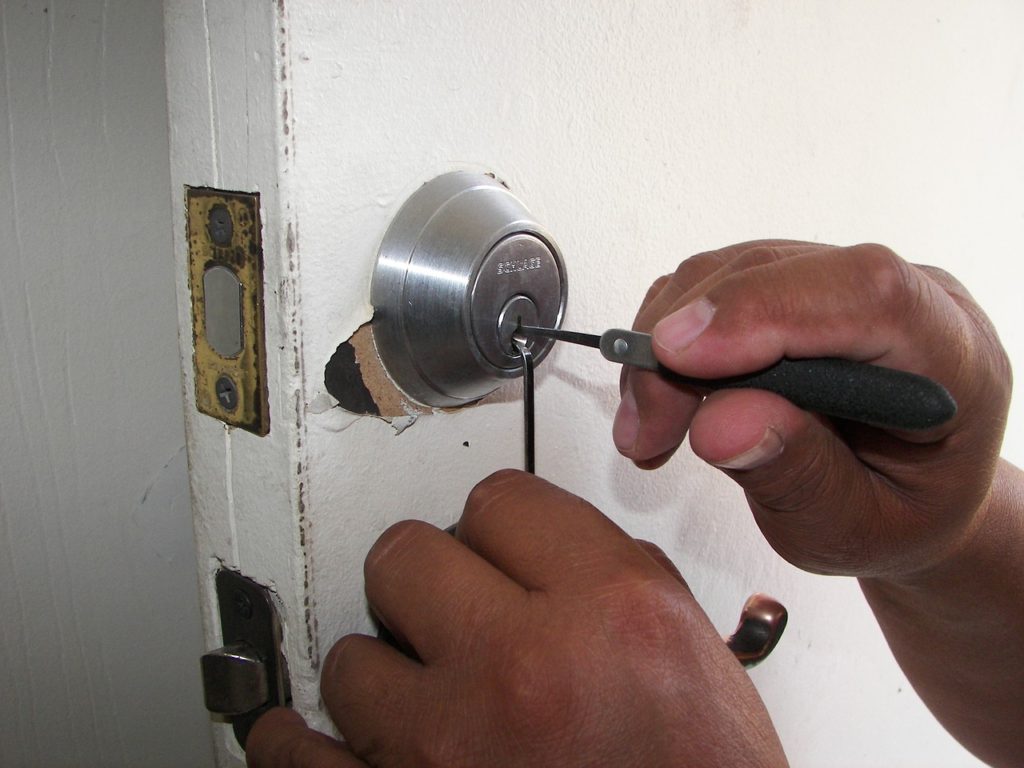
 ThinkFun Minecraft Magnetic Travel Puzzle
ThinkFun Minecraft Magnetic Travel Puzzle
One of the most popular games today is Minecraft. It reaches all genders and ages. Some kids (and adults too no doubt) get hooked onto it and start looking for newer ways to enjoy the game, like using a modded Minecraft server hosting for the game that allows greater customization, faster speeds and more, making the video game more enjoyable. Hence, this makes it the perfect gift for all the kids on your shopping list this year. It works like this; solve the challenges and advance on your journey, using your most powerful weapon-YOUR BRAIN! In this mind-bending game of deductive reasoning, players use positive and negative visual clues to place magnetic Minecraft weapons and armor on the Crafting Table in the correct arrangement. When your arrangement includes all the Clue Patterns on the Challenge-YOU WIN! It’s a fun logic game that comes with 40 challenges of increasing difficulty, from beginner to expert, and is one of the best gifts you can buy for kids who like smart games and a challenge. Playing through the increasingly difficult challenges will improve logical reasoning and critical thinking skills, all through fun gameplay.
Click here to purchase
Teach My Learning Kits 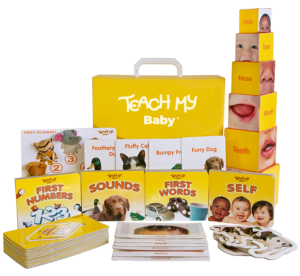
From the moment our babies are born, they are in a constant progression of learning and developing their wonderfully new brains as they take in the big world around them. This makes us, as parents, their very first teachers! Teach My Learning Kits provide parents with award winning, all-in-one learning kits that will foster the little minds they love by promoting fine motor skills, hand eye coordination and self-awareness. Teach My offers kits in the following age brackets: Baby (6 Months +), Toddler (18 Months +), Preschooler (3 Years +) and Kindergartner (4 Years +). The contents of each kit have been thoughtfully researched and selected to meet your child’s developmental needs, providing screen-free learning options for you to play and interact with them as they grow. All of these materials have been conveniently packaged into in an organized Teach My resource kit that includes a guide for parents on how to use the materials with their little one. Click the link below to purchase yours today!
Click here to purchase
 Color My Cookie
Color My Cookie
Are you looking for a way to brighten your day? Wanting to help support family owned businesses during this pandemic? Then you are going to love Color My Cookie. Each kit (only $35 – such a deal) contains perfectly made and iced cookies, a cookie shaped like a palette (used to ‘paint’ the cookies), paint brush, frosting and sprinkles. Each season they release new themed kits, but also have some popular kits they keep all year round. Color My Cookie is fun not just for kids, but adults love them too. Check out all the kit options that are for sale now with the link below.
Click here to purchase
Lulu Junior IlluStory Kit – Create Your Own Book!
My kids love to read books. Being a book lover myself I loved finding this amazing product! Lulu Junior created a IlluStory Kit so that your child can use their inter creativity to make their own book. The kit comes with a guide the “Just Imagine…A Guide to Writing and Illustrating your Story” which helps your child get their big picture and learn how to organize their thoughts to make their own book. The IlluStory kit allows a child to write and illustrate their own full-color, 18 page, professionally printed hardcover book. When you are done creating your book you use your personally unique code and mail the book into Lulu Junior. They will then take your work and put it in a real hardcover book! This is coolest gift for the bookworms on your holiday list.
Click here to purchase
 Lulu Junior My Comic Book – Create Your Own Comic!
Lulu Junior My Comic Book – Create Your Own Comic!
Similar to the product above, My Comic Book from Lulu Junior allows your little writer to make their own comic book! If you have a young reader in your home, or on your shopping list, you probably know that graphic novels are huge right now. They are the so popular that more and more authors are switching to this format for their books (Think Babysitters Club and many others). Comic style books draw appeal to children with the uses of word bubbles, which allows the children to visual see who is talking and who is listening. While it is a craze among the youth of today, don’t forget that grown ups love them too! If you know a friend or relative that loves superhero’s, odds are they like comics too. This gift can really go to so many people on your list.
Click here to purchase
Happy Lappies 
A Very Lappy Christmas is Caroline Henrich’s first book. While she was working with a Norwegian company, she fell in love with a dog, a Finnish Lapphund named Leo. She and her husband later added two to their family and both became therapy dogs. These dogs are the inspiration for her book Happy Lappies. Happy Lappies is a book about how Lappies saved Christmas! ‘Several weeks before Christmas, Snowy, her brothers, and her parents learn that Santa may not be able to deliver gifts to the children around the world because all the reindeer except for Donner and Rudolph have disappeared into the Northern Lights. The Lappies are asked to help save Christmas. They are hesitant to leave their Pop-Pop Steve who is in a wheelchair after a fall. With his support, the Lappies set off on a great adventure to learn about themselves and the value of teamwork, as they try to save Christmas for the children.’
Click here to purchase
 Piggy Paint Nail Polish
Piggy Paint Nail Polish
So many little girls love to have their nails polished. But as a mom, we worry about the products we use and what is safe for our children. The creator of Piggy Paint thought about this and more. Often times kids will bite their nails and usually pick the polish off with their teeth and ew, yeah, eat the polish. Thankfully Piggy Paint polish is a non-toxic, water-based polish that doesn’t wash or peel off. It comes in dozens of vibrant shades and is virtually odorless. Best of all it’s free of ALL harsh chemicals, cruelty-free & Vegan! Check out the new Santa’s Sweetie gift set, available now – click link below.
Click here to purchase
Old School Truck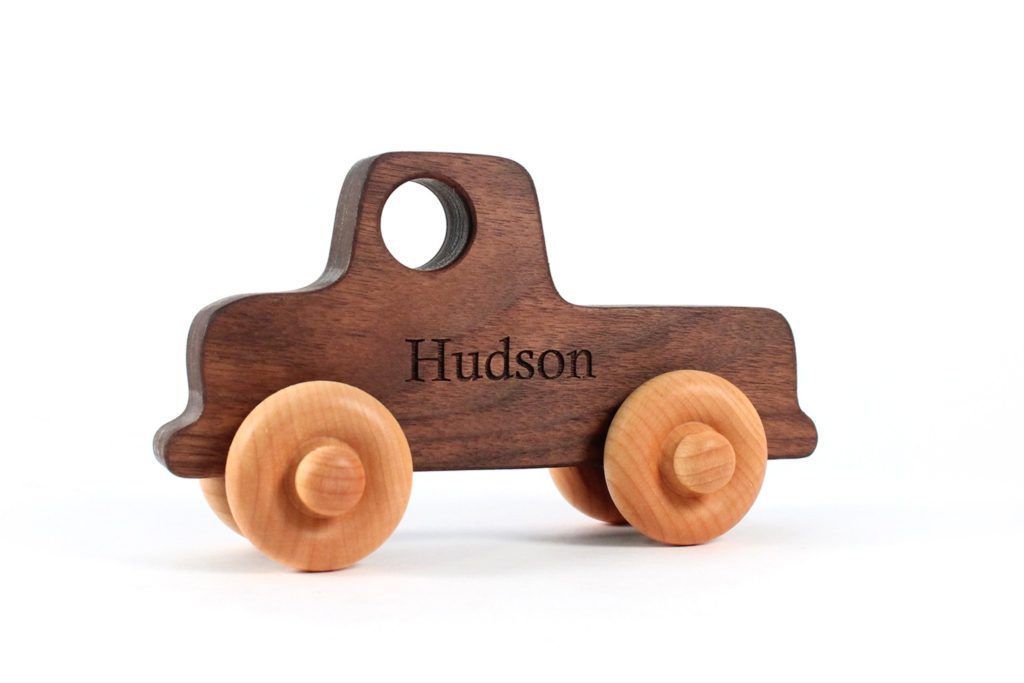
You can’t get better than quality wood toys crafted by fun-loving parents. Smiling Tree toys is a family owned business working hard to transform raw lumber into beautiful, safe, and all natural keepsake wooden toys. Their heirloom gifts are ideal for any age! Their user friendly website helps any shopper search for the perfect toy by age, occasion, or season. One of MamatheFox’s favorite Smiling Tree Toy products is the customizable Old School Truck. The old-school truck is classic and timeless; a must-have for any little one’s wooden toy collection. We were sure to personalize it for added sentiment for my nephew’s first Christmas. Be sure to check out all of Smiling Tree Toys gorgeous collection this holiday season!
Click here to purchase
 Resin Craft Kit: Unicorn Headband from Purple Ladybug
Resin Craft Kit: Unicorn Headband from Purple Ladybug
Kids are so into unicorns. Everywhere you turn you can find one. From apparel to lunchboxes. This holiday you can give the gift of crafting your very own unique unicorn horn headband! This kit comes with all the things you need to make the more perfect unicorn horn. It includes 3 colors of chunky glitter: pink, light blue and light purple. Each kit makes 1 unicorn horn headband. This craft is perfect for kids 8 and older, but if you have a younger child who would love to do this just be sure a grown up is there fully helping for safety. Purple Ladybug knows that our safety comes first, so they include gloves and eye protection so you can enjoy crafting without fear. Purple Ladybug has a broad variety of crafts and art accessories, so check out all their products after you check out this particular product in the link below.
Click here to purchase
Make Your Own Large Unicorn Horn Craft Kit by Purple Ladybug 
This is similar to the product above, but with a fun twist! This resin craft kit allows your child to make a unicorn horn that is prefect for display. This resin craft kit allows your child to make a unicorn horn that is prefect for display, or you could also browse using terms such as “resin project ideas for unicorn” and have access to various art ideas. Resin craft kit comes with five different colors of glitter: pink, light blue, purple, yellow, light purple. Each kit makes 1 unicorn horn that will be 6.25″ tall. This makes it great for scrunchie and bracelet storage. Mom’s know that when it comes time to pull that hair back into a ponytail you never seem to know where the ponytail holders and scrunchies are. When your child has this fun unicorn horn, that they customized and made themselves, they will always know where they can find a scrunchie. This kits also comes with gloves and eye protection to stay safe while crafting.
Click here to purchase
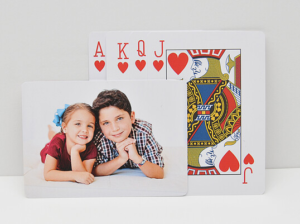 mpix – Personalized Photo Playing Cards
mpix – Personalized Photo Playing Cards
Our kids are getting into playing cards, and this holiday we are so excited to gift them some photo playing cards from mpix. Kids have been stuck at home during the Covid-19 pandemic and we have been having family game nights a lot nowadays. They learned how to play war, old maid, and some other classic card games. We haven’t introduced them to Magic the Gathering as of yet but this helpful resource can assist us when they want to. With mpix, you can easily upload a photo and have them put it on a deck of playing cards. They are on premium card stock and feel like any other real deck of playing cards. This also makes an amazing stocking stuffer for teens. Use code mpix2520 for a 25% discount
Click here to purchase
Multicolor Scratch Paper Notepad from Purple Ladybug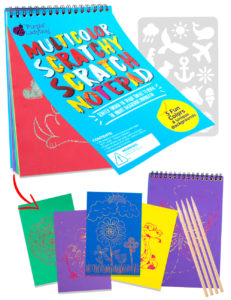
All of the kids at MamatheFox love art. Creating art is an important part of development for any child. Helping your child explore through art unlocks new ideas and types of play, increasing their confidence and creating joy. We love to give our kids a piece of scratch paper from Purple Ladybug to see what they create. This scratch paper has a surprise, when you use the enclosed stylus to scratch the surface, you reveal vibrant colors underneath! This notepad comes with 30 pages in a spiral bound book. We often travel and eat out around the holidays. Having this notepad and wooded stylus in my car is super helpful. We use them at restaurants to keep busy and at places like the airport or on long car rides. This gift is versatile and great for any child. Check out the link below to see more about this product and the other products Purple Ladybug has to offer.
Click here to purchase
Hape Shape Sorter and Xylophone and Piano 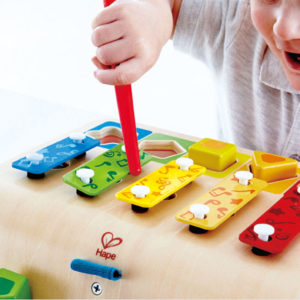
These high quality wooden toys are a perfect gift for any child on your list. Made from sustainable materials, the toys are made to last and offer lots of educational and developmental benefits. This toy offers lots of different benefits and is perfect for little learners. Colors, shapes, and music will all be taught through this multifunctional toy. Corresponding the puzzle pieces by color or shape gives children the ability to choose options and also offers double the learning. Once the pieces are in place children can press them down and use them like a piano to create noise – so cool! The xylophone pieces can also be tapped with the baton for another learning experience. Music, color, shapes, and more give kids lots to discover!
Click here to purchase
Hape My First Block Set 
Being one of the leading brands in the wooden toy world, there is no question that Hape offers wooden building blocks. This adorable, colorful set of blocks is a perfect set for a child. 80 colorful pieces of all shapes and sizes gives kids endless play opportunities. Not only is play easy with this set, but learning is easy too! Shape identification and fine motor skills are defiantly going to be challenged with these fun building blocks. Safe materials and non toxic finishes allow this set to be completely harmful to children. This is such a great gift for kiddos!
Coming in November!
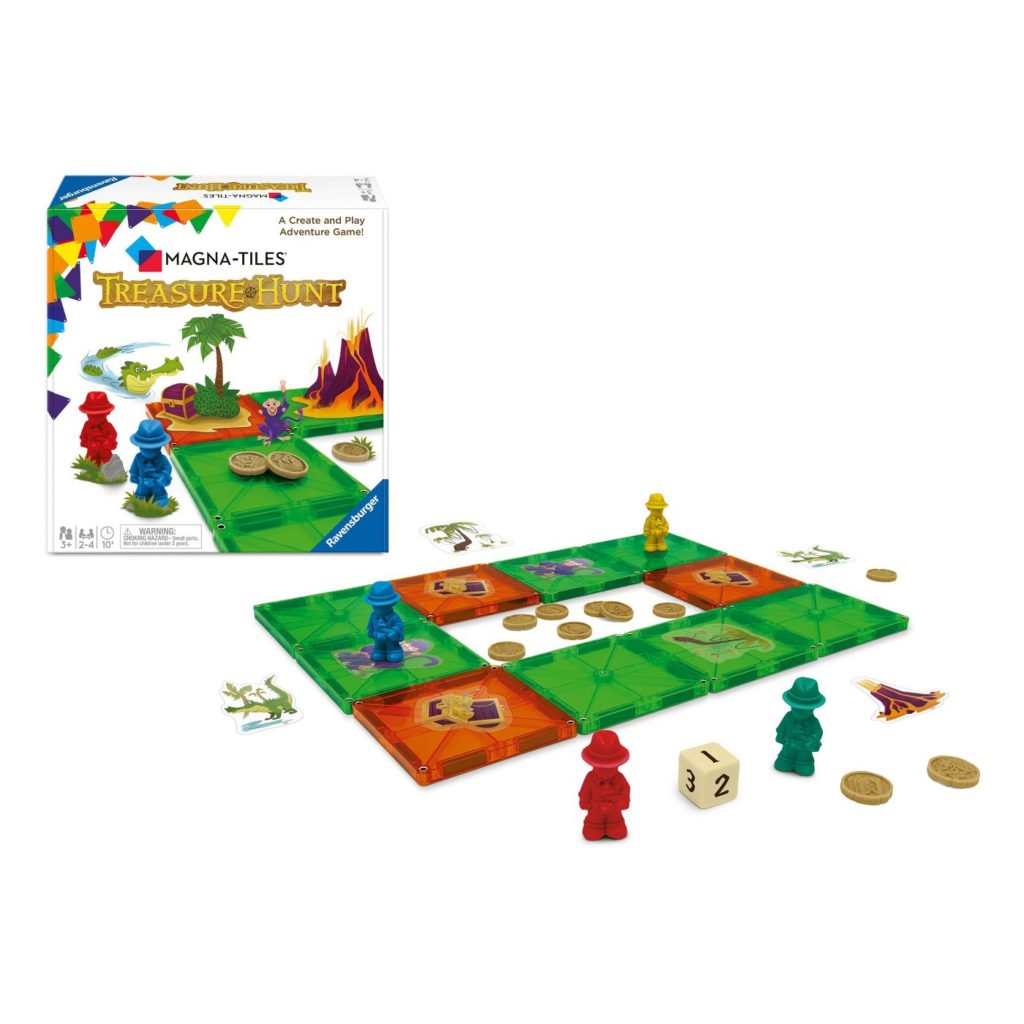 Magna Tiles Treasure Hunt Game
Magna Tiles Treasure Hunt Game
Magna Tiles are all the rage and definitely a favorite in our house…including my husband. We are also a big board game family so The Magna-Tile Treasure Hunt game was perfect. It combines the power of play with hands-on learning and creativity. Players act like a monkey as they collect golden coins around the board. Game play can follow the given instructions for two different games; Island Race Jungle Treasure. Players also have the option to creatively invent their own game by making new rules. Manga Tiles Treasure Hunt can be simple enough for a 3 year old to play, or can become a game of strategy for older kids. This game is a great way to add a new way to play with a toy already cherished and used in the home.
Click here to purchase
My First Rush Hour 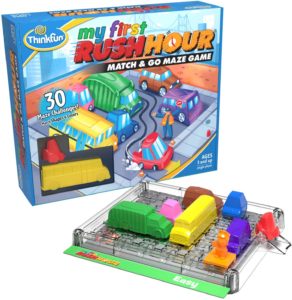
My First Rush Hour is one of ThinkFun’s most fun new stem toys for all families. This mathematical game involves an engaging game of matching and go maze logic. Players can start out easy and gradually increase in difficulty with 30 different challenges. My First Rush Hour is created by the trusted ThinkFun; the world’s leader in bring and logic games. All of their games have educational baselines that are presented in a fun and engaging way. Games, like My First Rush Hour, are perfect for the classroom, home, and traveling. They are also perfect for brain breaks for children doing at home virtual learning. Enjoy a fun logical game that builds critical thinking skills while reinforcing skills such as matching, colors, and shapes. Be sure to check out Rush Hour Jr. and Rush Hour for older kids and adults!
Click here to purchase
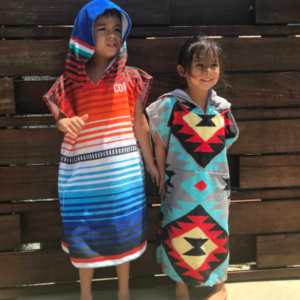 Kid’s Changing Poncho
Kid’s Changing Poncho
These adorable lightweight kid’s changing poncho are a perfect gift for any kiddo this holiday season. This two sided hooded towel allows little ones to change modestly whether you are at the beach, pool, or recreational center. Getting into dry clean clothes has never been so easy, which means a happier drive home. The changing poncho is made of microfiber material that dries kids fast and stays oder free. The hood and soft front pocket helps keep kids warm and protected during pool breaks, meal time, and bathroom runs. Choose from two modern designs sarape or tribal tech or pick from 5 original colors. For my family, I always try to give my kids a few gifts to hold onto until summer. Although they can’t use the gift immediately they are always pumped to used them during vacation, or they are excited all over again when summer rolls around. Be sure to check out all of Cor Surf’s equipment and innovative tools for easier days at the beach!
Click here to purchase
Smarty Jojo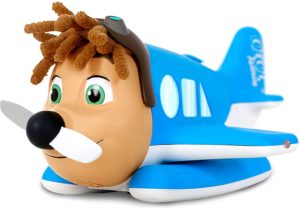
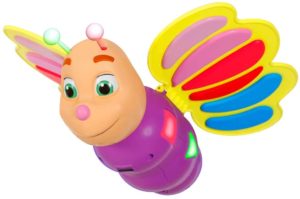 Smarty JoJo and Smarty Flutter are an educational toy getting kids up and moving. With smart technology, both smarty toys can identify colors! Smarty J0J0 and Flutter prompt children to get up an search for a specific color. ” Can you find something green?” ” Yes you can!” With a correct answer, JoJo lights up green and Flutter lights up yellow. These age appropriate toys are sure to keep high-energy active preschoolers moving and thinking. Colors, directions, opposites, shapes, and numbers are also taught through fun interactive games. Motion sensors encourages physical play as children move and search for Smarty’s given missions. With over 150 actions, each play experience is new and different. Smarty JOJO and Smarty Flutter have the ability to speak English or Spanish, helping children learn and edify a second language. Both Smarty toys are a wonderful educational toy that will entertain toddler and children alike.
Smarty JoJo and Smarty Flutter are an educational toy getting kids up and moving. With smart technology, both smarty toys can identify colors! Smarty J0J0 and Flutter prompt children to get up an search for a specific color. ” Can you find something green?” ” Yes you can!” With a correct answer, JoJo lights up green and Flutter lights up yellow. These age appropriate toys are sure to keep high-energy active preschoolers moving and thinking. Colors, directions, opposites, shapes, and numbers are also taught through fun interactive games. Motion sensors encourages physical play as children move and search for Smarty’s given missions. With over 150 actions, each play experience is new and different. Smarty JOJO and Smarty Flutter have the ability to speak English or Spanish, helping children learn and edify a second language. Both Smarty toys are a wonderful educational toy that will entertain toddler and children alike.
Click here to purchase
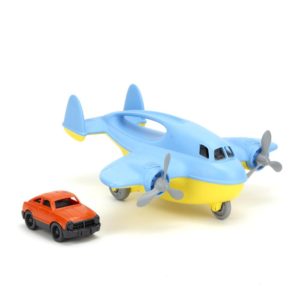 Green Toys – Cargo Plane
Green Toys – Cargo Plane
Green Toys are a fan favorite in our home and extended family. All their toys are made in the USA and made from recycled plastics. They uphold the highest eco-friendly standards and committed to sustainability. Green Toys are designed with children safety as a priority. Their toys lack glue, screws, metals, and paints and are meticulously designed to inspire imagination, open play, and creativity. The Cargo Plane is a perfect toy for little transportation enthusiasts. The bright blue and yellow cargo plane features three-wheels and two spinning propellers. Inside, a Green Toy Mini Car can be found and easily rolled down the flip-down door that doubles as a ramp. The cargo is spacious enough to stow away favorite toys, action figures, or nature finds. All Green Toys are easy to clean and dishwasher safe, which makes cleaning and sanitizing a parent’s dream. This holiday season be sure to check out Green Toys award winning 100% recycled plastic toys.
Click here to purchase
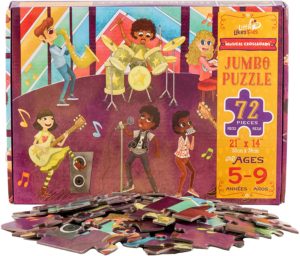 Musical Crossroads Puzzle
Musical Crossroads Puzzle
Puzzles are always a boredom buster and activity the whole family can participate in. Little Likes Kids has a variety of vibrant and delightful puzzles that are thoughtfully designed for the new generation. The aim of the family centered company is to provide a mix of inclusive toys. Toys are created with playful images that reflect the world’s wonderful diversity of today. The Musical Crossroad jumbo puzzle is a 72 piece featuring a multicultural band. This puzzle is a great tool for not only fine motor skills, but also a conversation starter on race and loving others. Whether you want to stock your classroom, playroom, or e-learning space, Little Likes Kids has a variety of puzzles and games to create an engaging learning environment.
Click here to purchase
 Santa Sticker Calendar
Santa Sticker Calendar
Little Likes Kids has a variety of vibrant and delightful puzzles that are thoughtfully designed for the new generation. The aim of the family centered company is to provide a mix of inclusive toys. Toys are created with playful images that reflect the world’s wonderful diversity of today. The Children’s advent calendar is a fun way to countdown to Christmas with little ones. It is sure to get everyone in the family excited for the coming holiday. Practicing advent is a way to prepare your mind for Christmas Day and talk about the miracles behind why we celebrate. The Little Likes Kid’s Santa Sticker Calendar uses 24 unique, unnumbered stickers for each day of the month. Each day kids will have a blast choosing a new sticker and sticking it on the calendar. No chocolate or candy involved, which is music to any parent. African-American and Caucasian Santas are both available with this Advent Sticker Calendar, supporting Little Like Kids mission.
Click here to purchase
Feltman Brothers Dolls
 Now the beauty and vintage look of Feltman Brothers collection can be cherished forever with a Feltman Brothers Doll. With four different doll options, any little girl or boy can choose a doll to their liking. Each 16 inch doll has soft realistic hair and a huggable body. The head and limbs are made of smooth vinyl and the legs and hands are moveable. Dolls come dressed in a Feltman Brothers onesie and included bonnet. Choose from the large collection of boy and girl clothes and accessories. All the clothes are doll sized versions of Feltman Brother’s so your little one can match their favorite friend. Bonnets and bootie sets are available as well as their holiday collection. This holiday season give your little mama the joy of a new classic friend they can cherish forever.
Now the beauty and vintage look of Feltman Brothers collection can be cherished forever with a Feltman Brothers Doll. With four different doll options, any little girl or boy can choose a doll to their liking. Each 16 inch doll has soft realistic hair and a huggable body. The head and limbs are made of smooth vinyl and the legs and hands are moveable. Dolls come dressed in a Feltman Brothers onesie and included bonnet. Choose from the large collection of boy and girl clothes and accessories. All the clothes are doll sized versions of Feltman Brother’s so your little one can match their favorite friend. Bonnets and bootie sets are available as well as their holiday collection. This holiday season give your little mama the joy of a new classic friend they can cherish forever.
Click here to purchase
 Two Sisters Spa – Christmas Surprise Bubble Bath Bomb Set
Two Sisters Spa – Christmas Surprise Bubble Bath Bomb Set
Bath time is such a fun time for our children. They love to relax and play while cleaning up. Now that my kids are in elementary school, they have discovered bath bombs. I love them myself so I was not surprised when they requested some of their own. But my kids are just that – kids! I didn’t want to use just any old bath bomb, so now we use Two Sisters Spa bath bombs. They are 99% Natural, Hand made in the USA, Eco Friendly, Cruelty Free, Vegan! But best of all – the set linked below has a special surprise toy in each one. Each Bubble Bath Bomb has a holiday squishy toy surprise hidden inside, which will be revealed as the bath bomb fizzes, bubbles, releases scent, and colors your bath water. Check out the link below for all the fun options Two Sisters Spa has available.
Click here to purchase
Magformers Basic Plus 14 Pc set
 Magnet tiles are one of our best open ended toys in the house. My kids play with them in so many different ways, that they almost always are incorporated in the scene they are setting. Magformers is one of the world’s leading manufactures of magnetic children’s toys. Their company was built around the importance of children developing through creative play. All of their products are designed with high quality materials and every magnet is kept safe with Sonic welded, BPA free, HQABS plastic. The Magformers basic plus 14 piece set is the perfect starter set or addition to a child’s magnet tile collection. It includes 14 pieces of 3 different shapes as well as a step-by-step educational idea booklet. Every year my children are gifted a new set of Magformers for two reasons. One, because I already have a place for them. After Christmas Day I add the new tiles to the old tiles and beat the overwhelming toy crowding in our playroom. Second, I love that Magformers offers a huge variety of play sets that are compatible with all Magformers shapes and accessories. Children can follow the given directions to learn and create a new structure or mode of transportation. Then eventually they can combine pieces to creatively build and explore. The options are limitless! This holiday season be sure to check out Magformers’ huge collection of magnet tiles.
Magnet tiles are one of our best open ended toys in the house. My kids play with them in so many different ways, that they almost always are incorporated in the scene they are setting. Magformers is one of the world’s leading manufactures of magnetic children’s toys. Their company was built around the importance of children developing through creative play. All of their products are designed with high quality materials and every magnet is kept safe with Sonic welded, BPA free, HQABS plastic. The Magformers basic plus 14 piece set is the perfect starter set or addition to a child’s magnet tile collection. It includes 14 pieces of 3 different shapes as well as a step-by-step educational idea booklet. Every year my children are gifted a new set of Magformers for two reasons. One, because I already have a place for them. After Christmas Day I add the new tiles to the old tiles and beat the overwhelming toy crowding in our playroom. Second, I love that Magformers offers a huge variety of play sets that are compatible with all Magformers shapes and accessories. Children can follow the given directions to learn and create a new structure or mode of transportation. Then eventually they can combine pieces to creatively build and explore. The options are limitless! This holiday season be sure to check out Magformers’ huge collection of magnet tiles.
Click here to purchase
SmartFelt Toys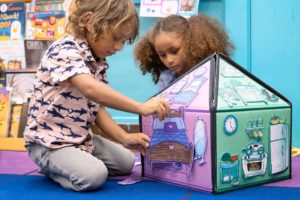
These engaging felt toys are so great to have on hand if littles are in your home. Created by a speech pathologist, these toys are made for kids to learn while playing. The catch though, they don’t actually realize that they’re learning. Developing early language skills and building vocabulary is easy with the interactive, multi-sensory toy. The design is unique and allows children to use it flat or transform it into a reversible, 3D play set. My Little House and My Little Farm include soft, stickable felt pieces that encourage early language concepts. Each piece has a specific purpose; kids can match the pieces together or create their own scene. Smart Felt Toys is great for younger kiddos to keep busy while older kids are schooling, and also great for children who are struggling with verbal development.
Click here to purchase
Stomp Rocket 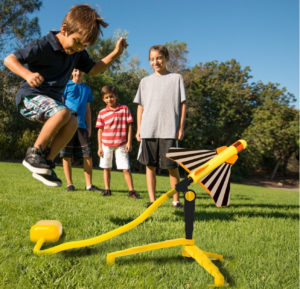
We love the Stomp-Rocket brand and the products they provide. Their rockets and planes are totally kid powered and require no batteries. It’s a fun activity that is perfect for kids of all ages. Assembly is super easy, so fun is just around the corner. Stomp Rocket is a great STEM teaching toy that allows for a lot of teaching opportunity. It’s even easier to teach your kids about these ideas with the Stomp Rocket Stompin’ Science Book. Kids (and parents!) can earn about force, gravity, air, momentum, angles, and more. Stomp Rockets are great for indoor use and even better outside. Summer or winter, these are so perfect for kiddos.
Click here to purchase
 Lunii
Lunii
My family has a strong love for literature and story telling. Our shelves are packed with books and my kids ask multiple times a day for a read aloud. Sadly I’m not always available to stop everything and start a read aloud, which often leaves me feeling guilty. How can I say no to books? We were so excited to find a read aloud solution with France’s top-selling toy Lunii. Lunii is a screen-free, emission-free unique story maker. The audio player comes with 48 stories plus 12 additional free stories to download after purchase. Lunii is crafted in an adorable retro audio player, however it is far from retro. It can store up to 100 albums of different languages and an autonomy of over 10 hours of continuous listening. Children can listen using headphones. Lunii’s Octave headphones are volumed limited for safe listening volumes and includes standard double jack lug so several people can listen at once. Lunii is a perfect gift for screen free entertainment that feeds the imagination and sparks creativity.
Click here to purchase
GoGo Gachas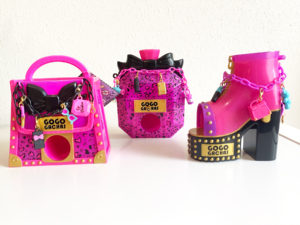
From capsule collections in fashion, to capsule toys for kids – the capsule craze has been a longstanding and popular trend for all ages. GoGo Gachas brings the fashion and fun to toys with its fashionable accessories dispensed in every kawaii capsule! Just like a vending machine, or popular Japanese “Gachapon,” each dispenser is loaded with four capsules and a surprise kawaii charm inside. Simply press the button to dispense one of the capsules- then open it up to find out which charm you “gacha!” GoGo Gachas come in three show-stopping styles like the cheetah print purse, luxe perfume bottle and groovy platform heel. Collect all 24 charms to complete your perfect charm bracelet or necklace.
Click here to purchase
 Shore Buddies
Shore Buddies
My kids love stuffed animals, and to be honest I don’t know a child who doesn’t. There is something warm and inviting about a big eyed plush animal ready for a hug. Shore-buddies brings all the lovable qualities of stuffed animals combined with a mission to make the world a better place. Shore Buddies are made from recycled plastic bottles. Collected bottles are sorted, cleaned, and shredded into plastic pellets. The pellets are then melted down and turned into the yarn used to make shore buddies. There are five soft adorable sea animal options. Each animal has a Shore-Buddy special name and a authentic sound box. They also have created an adorable cautionary tale called Shore Buddies and the plastic ocean. This book gives each Shore-Buddy a personality and voice to bring to life the struggle and hardship pollution has on marine life. Besides doing their part to prevent filling landfills, Shore-Buddies help fund educational outreach campaigns to educate children about pollution and saving marine life. Shop with a purpose through Shore-Buddies and give the gift that keeps our planet green!
Click here to purchase
 pediped
pediped
pediped footwear is one of the leading shoe companies for children. There are more than 120 designs for boys and girls between their three collections; Originals , Grip ‘n’ Go™ and Flex . The award-winning footwear is available in sizes newborn to 6 Youth and is approved by the American Pediatric Medical Association. pediped’s ultra light technology is specifically designed to support kids’ feet in all activities, while giving them the flexibility and freedom their developing feet need. Take them to playground, vacation, school, or any adventure. Their shoes are even equipped with quick-dry EVA footbed. In addition, pediped has a unique Flex Fit System, additional inserts can be added or removed to create the perfect fit for your child’s growing foot! pediped shoes have exceptional quality and unsurpassed comfort for little feet always on the go.
Click here to purchase
 ergoPouch
ergoPouch
Have a baby, know a baby, seen a baby? Then you’ve probably been in a discussion about sleeping habits! A full night’s rest, that is free of worry, seems like only a dream to most moms. ergoPouch is an award winning manufacturer of organic sleep products that are specifically designed for better night’s sleep. They’ve engineered a wide range of bags including swaddles, sleeping bags, sleep suit bags and pajamas covering ages newborn to 6 years. ergoPouch just recently released a new line of adorable doll Sleeping bags. Made with the same non-toxic organic fabrics as any of the products in their collection, these doll sleeping bags are sustainable and soft. Help your toddler learn their bedtime routine as they role play with their favorite doll or stuffed animal. ErgoPouch Doll Sleeping Bags are available in three stylish prints that are also offered on compatible sleepwear for your child. Your little one will be delighted to fall asleep snuggling their matching mini-me, both snuggled up in their ergoPouch.
Click here to purchase
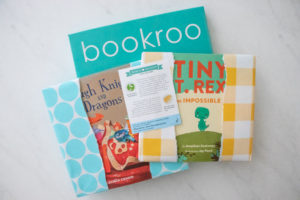 Bookroo
Bookroo
Bookroo is the perfect gift for the kid whose parents are asking for no more toys! This year give the timeless gift of books in the form of a subscription box. Bookroo has 3 subscription options based on age and reading level. Board Books, which contains 3 sturdy books for kids ages 0-3. The Picture Book club has 2 hardcover books appropriate for kids ages 3-6. The highest level reader option is The Chapter Book and is great for kids ages 7-10 and comes with 2 chapter books. They offer month to month, 3 box prepay, 6 box prepay or 12 box prepay. You will not be disappointed with Bookroo books choices as they are curated to contain the best options for your little reader. As a bonus, each box includes an insert highlighting the books. Insights from the authors or illustrators, parents guide to engage in conversations about the books and even special offers are also included. We cannot rave enough about Bookroo and are sure you will feel the same once your child excitedly cuddles up with a new pile of books.
Click here to purchase
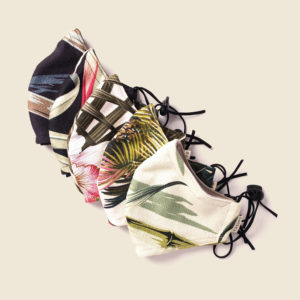 CASUPO – Kids Face Masks
CASUPO – Kids Face Masks
CASUPO is a leading brand is not your average brand. They donate a portion of their profits to FUNDANICA, a non-profit organization dedicated to providing medical assistance to a children’s hospital in Venezuela, where the CASUPO mountain range lives and where the founder spent weekends hiking as a kid. They strive to make quality items that are also super cute. They have a broad line of masks, which we are all needing now a days. Their kids masks are washable – best of all they are durable, breathable and comfortable for your kids. These protective masks are made with premium cotton and soft elastic. What is unique is their multiple kid sizes – ages 3-4, 6-8 and 9-12 years of age. Making they fit all sizes of children. Check out their full collection in the link below.
Click here to purchase
What’s Wrong With Grown-Ups?
Take the time this holiday break to get connected with the ones you love most. What’s Wrong with Grown Ups is a a card game that gives parents an opportunity to chat with their kids, while giving kids a voice to speak their mind. This game is a great family conversation starter, or can be used as an icebreaker to get to know children who have recently entered your life. This easy-to-play game includes a keepsake box, 1 Dice,100 Question Cards exploring 5 categories each: Play, Connect, Imagine, Challenge, and Grow. MamatheFox loves Authentic Agility Games for not only their clever ideas, but their mission to give back to the community. Authentic Agility Games donates a portion of proceeds from your purchase to organizations advancing education and entrepreneurship. What’s Wrong With Grown-Ups is a great gift for teens or adults and would fit perfectly in a stocking!
Click Here to Purchase
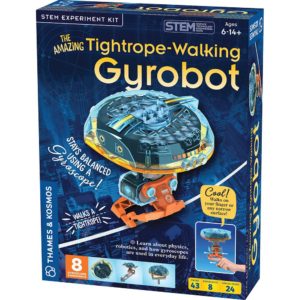 The Amazing Tightrope-Walking Gyrobot
The Amazing Tightrope-Walking Gyrobot
This holiday season give a STEM themed gift that will keep kids learning, even from home. How about a robot fit for the circus? Recommended for children 6 and older, this Tightrope Walking Gyrobot is pretty impressive as he can walk, step by step, along a tightrope. Thanks to the robot’s main component, a gyroscope, it can maintain its balance and perform this fun trick without falling over! The kit includes parts to build the robot and an illustrated experiment manual. Through eight guided experiments, explore the astonishing powers of the motorized gyroscope and understand the physics behind its amazing behaviors. Kids can also experiment with the balancing behavior of the motorized gyroscope by itself, testing its ability to balance on your finger, on a pole, or even dangling from a string. Young engineers can learn about the science of gyroscopic devices with The Amazing Tightrope-Walking Gyrobot.
Click here to purchase
The World Needs Who You Were Made to Be 
Written by Joanna Gaines, this book celebrates how creativity and acceptance have the ability to come together in a bright and beautiful adventure. This is the second book that Joanna Gaines has written; the first being the #1 New York Times bestselling book We Are the Gardeners. The book follows some children an their journey as they build their ow hot-air balloons. The kids work together and use their skills and processes to fill the sky with the colors of the hot-air balloons. Then its learned that life is more beautiful and vibrant when differences are celebrated – ours and the kids in the book. Kids learn a lot from the book; celebrating one-of-a-kind strength, teamwork, acceptance of differences, sharing talents and abilities, lending a helping hand, and caring for one another. The beautifully illustrated book is full of pinks, blues, oranges, greens, and yellows. The children’s book illustrated by Julianna Swaney and written by Joana Gaines is perfect for children ages 4-8.
Click here to purchase
Cocoa’s Cranky Christmas 
This silly board book is great for kids 2-6 years and is a interactive story. Kids will sing, clap, and bark through the pages to try and cheer Cocoa up just in time for Christmas Day. The pages of Cocoa’s Cranky Christmas are filled with minimalist artwork by Beth Hughes. Kids will embrace the Christmas season in a little bit of a different way – through laughter. Not only is this a read aloud, but a laugh along; at story time, bedtime, or anytime! This is a great stocking stuffer, Advent gift, or Christmas morning surprise.
Click here to purchase
Hello Little Dreamer 
Rhyming books are always good to have on the shelf. This heartwarming book written by Kathie Lee Gifford and illustrated by Anita Schmidt is full of whimsical artwork. The book is a great way to show children that they were created by God for a special purpose. Kids learn that finding their passions and dreams help them discover and celebrate their God-give purpose in the world. The joy kids have the ability to feel when knowing that God made them for a purpose is one that is priceless. Before they were born God has a plan for each and every one of them; whether dreams are found quickly or take time to develop, a beautiful picture is created for each child’s life. This is a perfect book for not only Christmas but any occasion.
Click here to purchase
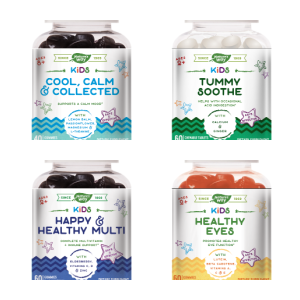 Nature’s Way KiDS
Nature’s Way KiDS
Are you looking for a practical gift for a kid on your shopping list? Have you been stressed about on-line learning and having your kids around 24/7? Nature’s Way just released a new line of vitamins and supplements just for KiDS. The new Nature’s Way KiDS line is specifically designed with children’s various need states in mind. Whether you’re looking to support your child’s overall immune support with Happy & Healthy; bone and muscle support with Growing Bones & Muscles; a calm mood with Cool, Calm & Collected; healthy eye function with Healthy Eyes; or support with the occasional acid indigestion with Tummy Soothe, Nature’s Way KiDS line is here for parents looking to provide their children with the needed support to optimize their schooling experience.
Click here to purchase
We Cool – Hydro Bottle
Crafty kids love We Cool products. With kids not being allowed to use water fountains while at school they are now being told to bring a water bottle to school. When you gift a kid a We Cool ILY Hydro Bottle kit you are letting them not only have fun by creating their own masterpiece, but you are helping them make a unique bottle that will not be confused with other kids bottles. Each water bottle includes 60+ awesome stickers and 2 markers allowing kids to customize their own bottle. The bottles are not only super cool but also durable, BPA-free, 100% food safe, and are dishwasher safe for convenient cleaning.
Click here to purchase
 We Cool – Pura Loom Bracelet Maker
We Cool – Pura Loom Bracelet Maker
The art of making bracelets from string has been around for generations. Activity King has created their Pura Loom Deluxe Bracelt Maker with ease and fun in mind. Kids can create using satin para chords, knotting cords, and wax cotton cords. It contains enough materials inside for more than 20 different bracelets! Includes the Pura Loom itself, along with 100 metallic beads, a premium metal charm, lots of clips and clasps, and seven standard threads, each in a different color. Plus, it folds up into a little compact size so kids can easily take it on the go. Check out all the details in the link below.
Click here to purchase

We Cool – Do-It-Yourself Scruncheeze Loom
VISCO girls look out! This super fun loom allows you to create your own Scruncheese, and it’s easy as 1-2-3. Activity Kings DIY Scruncheeze Loom Kit is an ideal DIY kit for kids aged 6+. This ultimate kit includes easy to follow instructions and everything you need to make 10 fashionable scrunchies. Each kit includes 1 Scruncheeze loom, 7 pre-cut Fabric Strips, 4 Satin Fabric Strips, Fabric Glue, 2 Fabric Coated Elastic Cord, Elastic Cord, and 3 Trendy Charms. Easy-to- follow instructions are also included. We love that this kit allows kids to produce their own fluffy universal scrunchies!
Click here to purchase
Hyland’s 
Making safe and natural homeopathic medicines is what Hyland’s is all about. Homeopathic medicine works with the body to use its own natural defenses to heal and restore balance. Much different than conventional medicine, natural homeopathic medicines work without side effects; this is a large reason they are so in need. Hyland’s offers tons of products, and their Hyland’s 4 Kids line is full of medicine that is good to have on the shelf at all times. Cold & cough, oral pain, earache, sleep, tummy, pain, allergy, bumps & bruises, diaper rash are all symptoms that their baby and kids products help relieve. Parents will love having any of these products on hand, especially in during these winter months.
Click here to purchase
Protectors of the Rainbow
Growing up I always loved games with hiding and a home base. This new game combines the two perfectly and is a huge hit with kids. The games starts by the leprechaun (a parent or a player) taking all of the colored gems and hides them around the house or outside. Then, once the leprechaun says all the gems are hidden, the unicorn finders start their search. When you find the gems place them into the homebased rainbow. Great for kids 4+ and 2 – 7 players can participate. It lights up making it great for outside night time games and can be used as a nightlight. Check out the link below to see how cool this game really is.
Click here to purchase
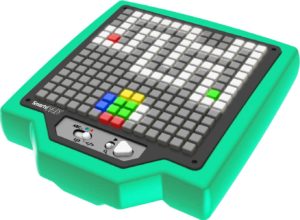 Smarty Pad
Smarty Pad
Smarty PAD is an interactive LED tablet developed specifically for young children. Including 12 smart learning games, the Smarty Pad teaches children through engaging play. The LED tablet is an interactive display with high-tech motion sensors. Moving and manipulating the lightweight but sturdy tablet helps improve cognition and fine motor skills. The bright LED screen is an interactive display with visual complement activities. Smarty Pad teaches a number of subjects including the alphabet, numbers, beginning coding, colors, and critical thinking. With over 100 different responses, kids will be sure to keep learning and laughing. The Smarty Pad is a great gift to keep kids busy in the car or an educational brain break during school hours.
Click here to purchase
Cali’s Books 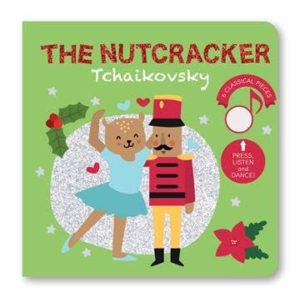
Kids love books, and books are such a great Christmas gift for anyone. Cali’s Books are unique in that they use sound to develop skills. While reading these books, kids can listen to classics like The Nutcracker and Mozart, and more fun songs like Jingle Bells and Patty Cake. Their new line of books The Timeless Stories Collection. Books included are The Ugly Duckling, The Three Little Pigs, Jack & the Beanstalk, and more. These books have covers made of vegan leather and the titles are gold stamped on the front. They really are beautiful! Reading is such an important skill for kids to learn, so why not start them at a young age. These books will engage kids of all ages and will inspire them to love to read.
Click here to purchase
Camp Castle
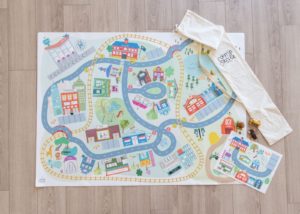
This family owned company was created by a mom of boys who love playing with cars. After searching for the perfect play mat and coming up short, she created one of her own. These durable, wipeable, super cute and engaging play mats are so great. The play mats are adorable and are available in many different options including:Dino land, dollhouse, farm, outer space, race track, and more! There are bundle options available too, including a carrying bag and wooden cars. A screen-free, battery-free, and noise-free toy is such a good toy option for Christmas. The mat is stylish and super durable, so moms and kids love them!
Click here to purchase
Wild Republic Pillowkins 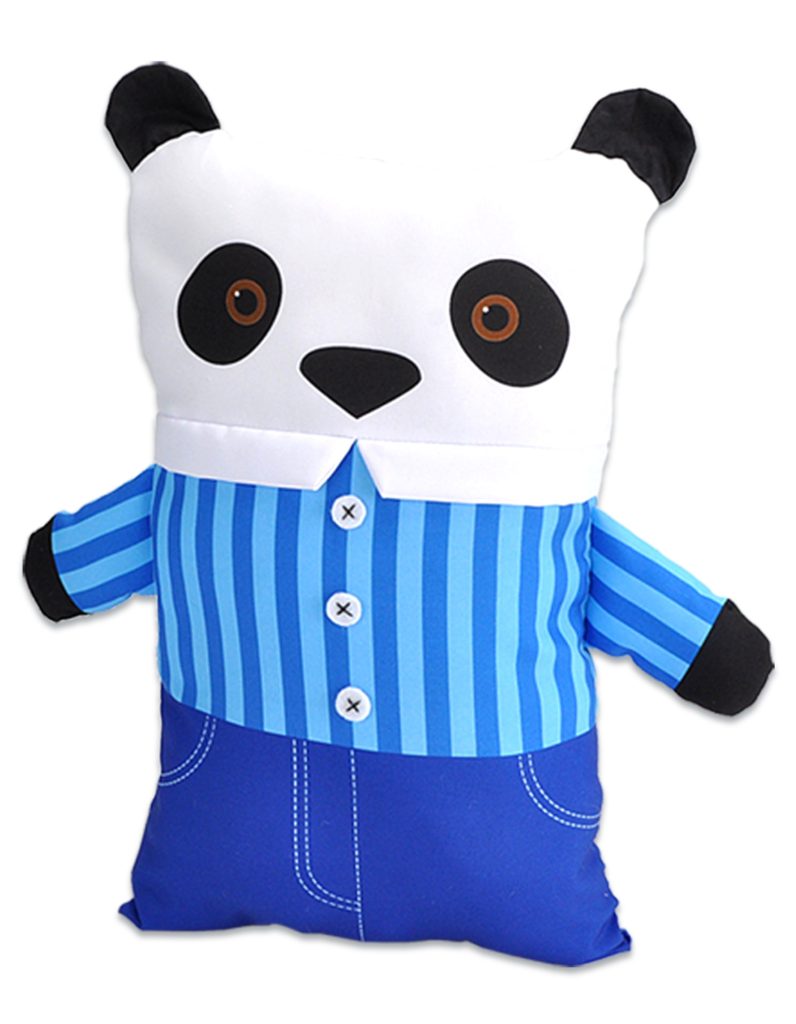
Wild Republic Pillowkins are fun animal character pillows perfect for any age of animal lovers. These soft 2 ply poly-cotton fabric pillows are excellent to take to camp outs, day care, sleepovers and more. Each pillow is 15 inches by 9 inches and very squeezable! Most importantly each Pillowkins is filled with spun recycled water bottles. Wild Republic is the global leader in designing and manufacturing realistic plush toys. The company was founded on the principle of fostering the curiosity of wildlife and the wonders of nature. Be sure to check out all of Wild Republic’s realistic animal toys for your favorite little zoologist!
Click here to purchase
 Guion the Lion
Guion the Lion
Get ready for whimsical delights and discoveries through Guion The Lion! A pirate adventure, dinosaur sightings, a magical kingdom with dragons, and more await you in the book, “Guion The Lion” by Rebecca Wilson Macsovits. Guion is an imaginative little lion who sees things a bit differently from his friends. That is, until they learn to appreciate his unique perspective and shift how they look at the world around them. Full of themes like empathy, curiosity, and adventure, “Guion The Lion” shows little readers, and bigger ones too, that appreciating differences and embracing others’ ideas can lead to unimaginable fun! There’s beauty all around you if you open your eyes. Unlock your kids’ and students’ imaginations and give them the keys to find magic moments in the everyday.
Click here to purchase
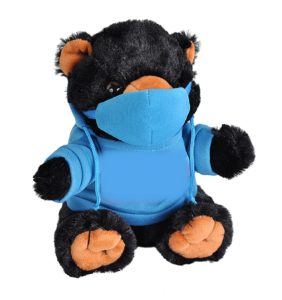
Wild Republic Comfortkins
Wild Republic Comfortkins plush animals just modernized with adorable tiny face masks. Since wearing face masks is a social norm and requirement, Comfortkins can help engage children through play while teaching them the importance of wearing a mask. These sweet Comfortkins plush animals encourage face mask wearing children and are an excellent reward for hard days of keeping their face covered. These soft 9 inch stuffed animals are a perfect size to bring any where a little friend is needed as a reminder to keep their make on. Like all Wild Republic Animals, comfortkins are filled with spun recycled water bottles.
Click here to purchase
Stick O 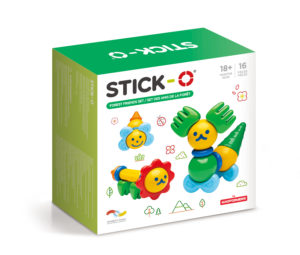
This STEM magnetic building set is so fun for kids 18 months and older. The rainbow colored shapes are bright and engaging; sure to keep the attention of child. Included are 3 spheres, 3 sticks, 2 discs and magnetic accessories that include bunny ears, flowers, cones, flower pots, and elephant ears. This set is great for critical thinking, brain development, and STEM education. Children can learn basic principles such as science, technology, engineering, and math. Fine motor skills, problem-solving, and color & shape recognition will be challenged too. Kids will surly love this building set!
Click here to purchase
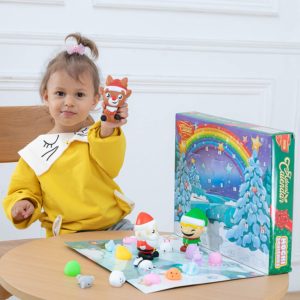 Interactive Advent Calendars
Interactive Advent Calendars
A few years ago, my kids thought it was Christmas morning the first time it snowed! They basically asked every morning after that, wishing and hoping for the day to come. After that, advent calendars have become a must! Advent calendars give kids something to look forward to as they count down to Christmas. It is a tangible way to see the days lessen as Christmas draws closer. Joyin’s interactive advent calendars keep kids busy on cold December days! Choose from crafts and cars to building blocks and makeup sets, slime sets and more! Like all advents, Joyin’s advents included 24 days of countdowns. Each day your child can open one of the cardboard windows and find one of the themed activities! Be sure to check out Joyin’ for one of their many advent options!
Click here to purchase
Kiddobloom 
Many people are getting plastic out of their homes and replacing it with healthier, sustainable items. Kiddobloom is a brand that creates made to last stainless steel dinnerware for kids. Their unique products are super cute and very practical. They have sets available that include a divided plate, a cup, and a bowl. Their silverware is available in two sizes – baby & toddler and kids. All the products are stackable too, so storage is a breeze! What’s most unique about Kiddobloom is that their products are engraved with either a fire truck, airplane, frog, or princess. This makes it super fun for kids, they’ll love the figures on their dinnerware!
Click here to purchase
OOLY 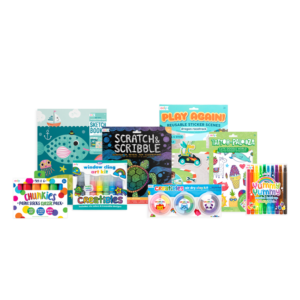
This holiday OOLY has done it again – they made the best line of crafting and art products for our kids. OOLY is the brand that kids, teens and adults all love. Their use of bright colors, creative product line and affordability make them a front runner in the arts an crafts world. This year the product product from them have been, Scented Erasers, Holiday Happy Packs, and their Stack of Stars Stacking Crayons. When you pop over to their website you will find may more products you will love. This year the Mermaid products were a top product used by the MamatheFox kids. The The all-new Mermaid Magic collection includes some of OOLY’s most popular products such as Pocket Pal Journals , Scratch & Scribble Scratch Art Kits, 6 Click Pens , Note Pals Sticky Tabs and graphite pencils.
Click here to purchase
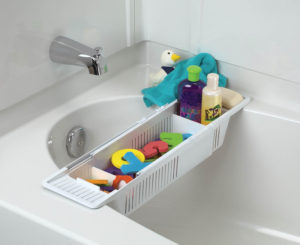 KidCo Bath Storage Basket
KidCo Bath Storage Basket
Bath time with kiddos can be so fun, but it can sure be a mess! The thoughtful and practical design of the KidCo Bath Storage Basket is helpful for both parents and kids when bath time is over and its time to clean up. For kids, the over the tub placement allows their toys to be stored within reach, allowing them to participate in cleaning up as well as practicing independent bath skills with bathing items like soaps and shampoos stored at their level. For parents, divider panels are provided to separate and organize items in the basket for a neat and orderly bath. In addition, the slotted sides and bottom provide peace of mind knowing that bath toy water is being drained properly to keep that pesky mold away. When its time to give the basket a good cleaning, it washes right up with soap and water or comes apart to slide into the top rack of your dishwasher.
Click here to purchase

VOOKS
Being stuck at home with Covid still growing, many parents are moving to apps for educational tools for their children. Many people, MamatheFox included, can’t visit their local library. This lack of books can truly stunt a chils development. Vooks is geared to kids 2-8 with the animated storybooks that feature beloved classics and new releases. A unique aspect to each Vook is that the pacing was created to replicate how a parent reads to their kids. It has read-along text, so the kids can follow along and learn. A streaming education platform — with more than 1.2 million users in 175 countries — VOOKS adds movement and sound to original storybook art allowing kids to watch and read their favorite stories. When kids aged 2 – 8 sign on at VOOKS.com they open a world of reading and learning online. Vooks offers a free tier with limited content and a premium tier for $4.99 a month or $49.99 for the year. For each station conducting interviews, Vooks will provide a special code for a 10 percent listener discount off the yearly subscription.
Vooks is available via Roku, Apple TV, AndroidTV, Amazon Fire TV, Comcast Xfinity, and as linear channels on both Roku TV and Vizio.
School Zone 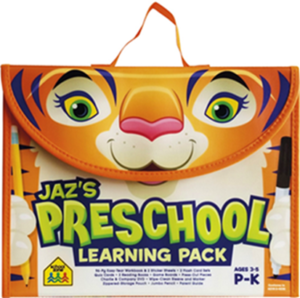
With many kids online learning this year, the School Zone products are a great way to supplement school or bring school on the go. These learning packs are full of many different games and activities to engage children and allow them to learn while having fun. Some features include early reader books, flash cards, board games, 96 page workbook, and more. So many different skills can be learned and mastered using these materials – letter sounds, numbers, rhyming, reading, addition & subtraction, syllables, and more. The available packs that School Zone offers include playtime, preschool, and kindergarten. Other materials include card games, flash cards, books, workbooks, tablets & accessories, and so much more!
Click here to purchase
Anywhere Teacher
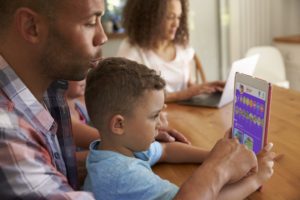
This teacher guide is a powerful online learning wherever you go – anytime, anywhere. The learning center gives access to limitless learning for kids ages 2-8. Developed by teachers, Anywhere Teacher is aligned to national learning standards. It is created and designed with levels so that kids can learn at their own pace; this is done through performance tracking and rewards. Learning is made fun through gameplay that educates. There is just the right balance of education and competition. Access is available from a desktop, tablet, or mobile device so Anywhere Teacher can literally be used anywhere. This is such an awesome way to help kids learn while they play. Anywhere Teacher is offering our readers a free 30 day trial when signing up at the link below and using the code SMARTKIDS.
Click here to purchase

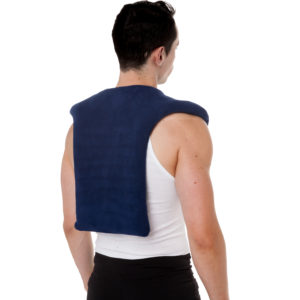
 Chiropractic Neck Pillow
Chiropractic Neck Pillow 
 Eggtronic Laptop Power Bank
Eggtronic Laptop Power Bank
 Woodies
Woodies
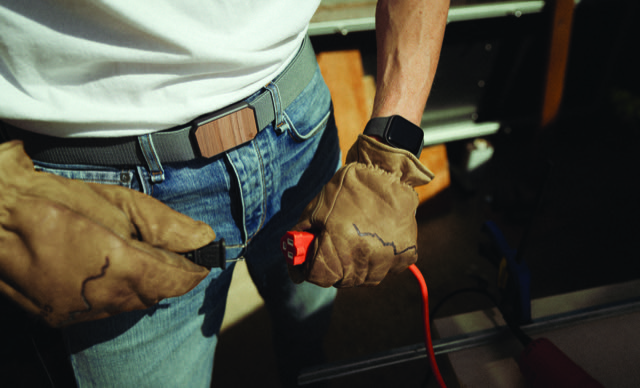 Groove Life
Groove Life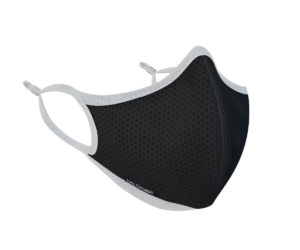
 The Shlocker is the ultimate gift for anyone on the move. This innovative shower caddy has all the “bells and whistles!” With commercial grade suction cups, the Shlocker can hold up to 40 lbs of toiletries, insuring all your favorite products are included. Modern and aesthetically pleasing holes are designed for drainage and air circulation, while still not compromising security. Products inside the Shlocker are kept safe with a 3 number combination lock; your toiletries are are safe in public bathrooms, dorm rooms, or co-living arrangements. Inside the shower caddy a fog resistant mirror is placed for easy shaving and grooming. The Shlocker is the perfect gift for your nephew in college, family friends with a house on wheels, or parents protecting their little ones.
The Shlocker is the ultimate gift for anyone on the move. This innovative shower caddy has all the “bells and whistles!” With commercial grade suction cups, the Shlocker can hold up to 40 lbs of toiletries, insuring all your favorite products are included. Modern and aesthetically pleasing holes are designed for drainage and air circulation, while still not compromising security. Products inside the Shlocker are kept safe with a 3 number combination lock; your toiletries are are safe in public bathrooms, dorm rooms, or co-living arrangements. Inside the shower caddy a fog resistant mirror is placed for easy shaving and grooming. The Shlocker is the perfect gift for your nephew in college, family friends with a house on wheels, or parents protecting their little ones. Joie Domi’s Inflatables
Joie Domi’s Inflatables

 ThinkFun Minecraft Magnetic Travel Puzzle
ThinkFun Minecraft Magnetic Travel Puzzle
 Color My Cookie
Color My Cookie
 Lulu Junior My Comic Book – Create Your Own Comic!
Lulu Junior My Comic Book – Create Your Own Comic!
 Piggy Paint Nail Polish
Piggy Paint Nail Polish
 Resin Craft Kit: Unicorn Headband from Purple Ladybug
Resin Craft Kit: Unicorn Headband from Purple Ladybug
 mpix – Personalized Photo Playing Cards
mpix – Personalized Photo Playing Cards


 Magna Tiles Treasure Hunt Game
Magna Tiles Treasure Hunt Game
 Kid’s Changing Poncho
Kid’s Changing Poncho 
 Smarty JoJo and Smarty Flutter are an educational toy getting kids up and moving. With smart technology, both smarty toys can identify colors! Smarty J0J0 and Flutter prompt children to get up an search for a specific color. ” Can you find something green?” ” Yes you can!” With a correct answer, JoJo lights up green and Flutter lights up yellow. These age appropriate toys are sure to keep high-energy active preschoolers moving and thinking. Colors, directions, opposites, shapes, and numbers are also taught through fun interactive games. Motion sensors encourages physical play as children move and search for Smarty’s given missions. With over 150 actions, each play experience is new and different. Smarty JOJO and Smarty Flutter have the ability to speak English or Spanish, helping children learn and edify a second language. Both Smarty toys are a wonderful educational toy that will entertain toddler and children alike.
Smarty JoJo and Smarty Flutter are an educational toy getting kids up and moving. With smart technology, both smarty toys can identify colors! Smarty J0J0 and Flutter prompt children to get up an search for a specific color. ” Can you find something green?” ” Yes you can!” With a correct answer, JoJo lights up green and Flutter lights up yellow. These age appropriate toys are sure to keep high-energy active preschoolers moving and thinking. Colors, directions, opposites, shapes, and numbers are also taught through fun interactive games. Motion sensors encourages physical play as children move and search for Smarty’s given missions. With over 150 actions, each play experience is new and different. Smarty JOJO and Smarty Flutter have the ability to speak English or Spanish, helping children learn and edify a second language. Both Smarty toys are a wonderful educational toy that will entertain toddler and children alike. Green Toys – Cargo Plane
Green Toys – Cargo Plane Musical Crossroads Puzzle
Musical Crossroads Puzzle Santa Sticker Calendar
Santa Sticker Calendar
 Two Sisters Spa – Christmas Surprise Bubble Bath Bomb Set
Two Sisters Spa – Christmas Surprise Bubble Bath Bomb Set Magnet tiles are one of our best open ended toys in the house. My kids play with them in so many different ways, that they almost always are incorporated in the scene they are setting. Magformers is one of the world’s leading manufactures of magnetic children’s toys. Their company was built around the importance of children developing through creative play. All of their products are designed with high quality materials and every magnet is kept safe with Sonic welded, BPA free, HQABS plastic. The Magformers basic plus 14 piece set is the perfect starter set or addition to a child’s magnet tile collection. It includes 14 pieces of 3 different shapes as well as a step-by-step educational idea booklet. Every year my children are gifted a new set of Magformers for two reasons. One, because I already have a place for them. After Christmas Day I add the new tiles to the old tiles and beat the overwhelming toy crowding in our playroom. Second, I love that Magformers offers a huge variety of play sets that are compatible with all Magformers shapes and accessories. Children can follow the given directions to learn and create a new structure or mode of transportation. Then eventually they can combine pieces to creatively build and explore. The options are limitless! This holiday season be sure to check out Magformers’ huge collection of magnet tiles.
Magnet tiles are one of our best open ended toys in the house. My kids play with them in so many different ways, that they almost always are incorporated in the scene they are setting. Magformers is one of the world’s leading manufactures of magnetic children’s toys. Their company was built around the importance of children developing through creative play. All of their products are designed with high quality materials and every magnet is kept safe with Sonic welded, BPA free, HQABS plastic. The Magformers basic plus 14 piece set is the perfect starter set or addition to a child’s magnet tile collection. It includes 14 pieces of 3 different shapes as well as a step-by-step educational idea booklet. Every year my children are gifted a new set of Magformers for two reasons. One, because I already have a place for them. After Christmas Day I add the new tiles to the old tiles and beat the overwhelming toy crowding in our playroom. Second, I love that Magformers offers a huge variety of play sets that are compatible with all Magformers shapes and accessories. Children can follow the given directions to learn and create a new structure or mode of transportation. Then eventually they can combine pieces to creatively build and explore. The options are limitless! This holiday season be sure to check out Magformers’ huge collection of magnet tiles.

 Lunii
Lunii
 Shore Buddies
Shore Buddies  pediped
pediped ergoPouch
ergoPouch Bookroo
Bookroo CASUPO – Kids Face Masks
CASUPO – Kids Face Masks
 The Amazing Tightrope-Walking Gyrobot
The Amazing Tightrope-Walking Gyrobot


 Nature’s Way KiDS
Nature’s Way KiDS 
 We Cool – Pura Loom Bracelet Maker
We Cool – Pura Loom Bracelet Maker


 Smarty Pad
Smarty Pad


 Guion the Lion
Guion the Lion

 Interactive Advent Calendars
Interactive Advent Calendars

 KidCo Bath Storage Basket
KidCo Bath Storage Basket



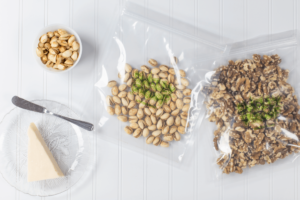





 Moscow Mule Copper Mugs
Moscow Mule Copper Mugs  Embossed Rolling Pin
Embossed Rolling Pin 
 Three Peaks Manuka Honey
Three Peaks Manuka Honey




 Seahorse Salt and Pepper Shakers
Seahorse Salt and Pepper Shakers



 SOULMUCH Holiday Cookie Box
SOULMUCH Holiday Cookie Box

 FogBlock
FogBlock
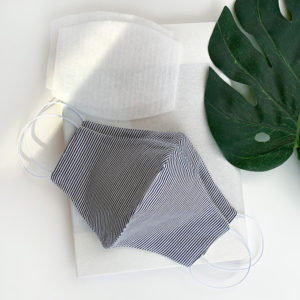 Marcellamoda NYC – Face Masks
Marcellamoda NYC – Face Masks
 Unstable Unicorns
Unstable Unicorns Kirk’s
Kirk’s
 South of France Natural Body Care
South of France Natural Body Care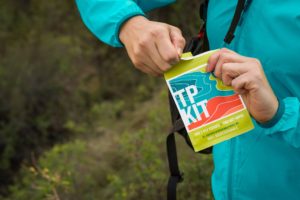
 You’re Pulling My Leg – Junior
You’re Pulling My Leg – Junior

 After the year we have all had, most people wouldn’t be the least bit surprised to be gifted social distancing “tools.” However, if I am going to give my love ones supplies for staying healthy and safe, I want to be sure the given products are healthy and safe themselves. That is why we love elyptol! As a company who puts natural at the forefront of their company, they work from the ground up to produce highly compatible skin-care and hygiene products. Naturally sanitizing eucalyptus oil is pared with ethanol derived from sugar and corn to creates a perfect combination for eliminating germs, while still being gentle and safe. Elyptol has a large collection of sanitizing products from simple hand sanitizer gel to carabiner clips to hold your favorite elyptol product on the go. They even making gifting easy with a 4 piece gift set that fits in a stylish handy travel pack. Embrace the year and give your family and friends, teachers and coworkers, a safe and gentle gift they will especially use and appreciate.
After the year we have all had, most people wouldn’t be the least bit surprised to be gifted social distancing “tools.” However, if I am going to give my love ones supplies for staying healthy and safe, I want to be sure the given products are healthy and safe themselves. That is why we love elyptol! As a company who puts natural at the forefront of their company, they work from the ground up to produce highly compatible skin-care and hygiene products. Naturally sanitizing eucalyptus oil is pared with ethanol derived from sugar and corn to creates a perfect combination for eliminating germs, while still being gentle and safe. Elyptol has a large collection of sanitizing products from simple hand sanitizer gel to carabiner clips to hold your favorite elyptol product on the go. They even making gifting easy with a 4 piece gift set that fits in a stylish handy travel pack. Embrace the year and give your family and friends, teachers and coworkers, a safe and gentle gift they will especially use and appreciate. CBDent’s toothpaste is formulated by dentists using the best all natural ingredients. Chosen ingredients are backed by science and shown to kill bacteria, fight inflammation, reduce sensitivity, and whiten teeth. CBDent is an American made company that follows cruelty free practices. All their products are gluten free, vegan, and 100% natural. CBDent supports healthy and safe oral hygiene routines while keeping your mouth feeling fresh. We love the simplicity of giving someone new toothpaste in their stockings, my children always love it! So what better way to surprise them by giving your loved ones the opportunity to try something new that is a healthier and more natural route! Check out CBDent to purchase up to 3 tubes of peppermint toothpaste at a discounted price!
CBDent’s toothpaste is formulated by dentists using the best all natural ingredients. Chosen ingredients are backed by science and shown to kill bacteria, fight inflammation, reduce sensitivity, and whiten teeth. CBDent is an American made company that follows cruelty free practices. All their products are gluten free, vegan, and 100% natural. CBDent supports healthy and safe oral hygiene routines while keeping your mouth feeling fresh. We love the simplicity of giving someone new toothpaste in their stockings, my children always love it! So what better way to surprise them by giving your loved ones the opportunity to try something new that is a healthier and more natural route! Check out CBDent to purchase up to 3 tubes of peppermint toothpaste at a discounted price!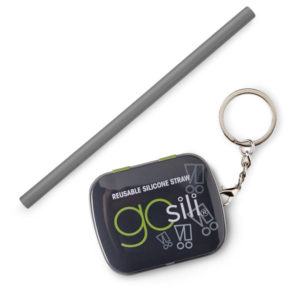


 Shore Buddy Straws
Shore Buddy Straws  Angry Putty
Angry Putty

 SPLATZ Hand Soap
SPLATZ Hand Soap 
 Baby Bala Masks
Baby Bala Masks




